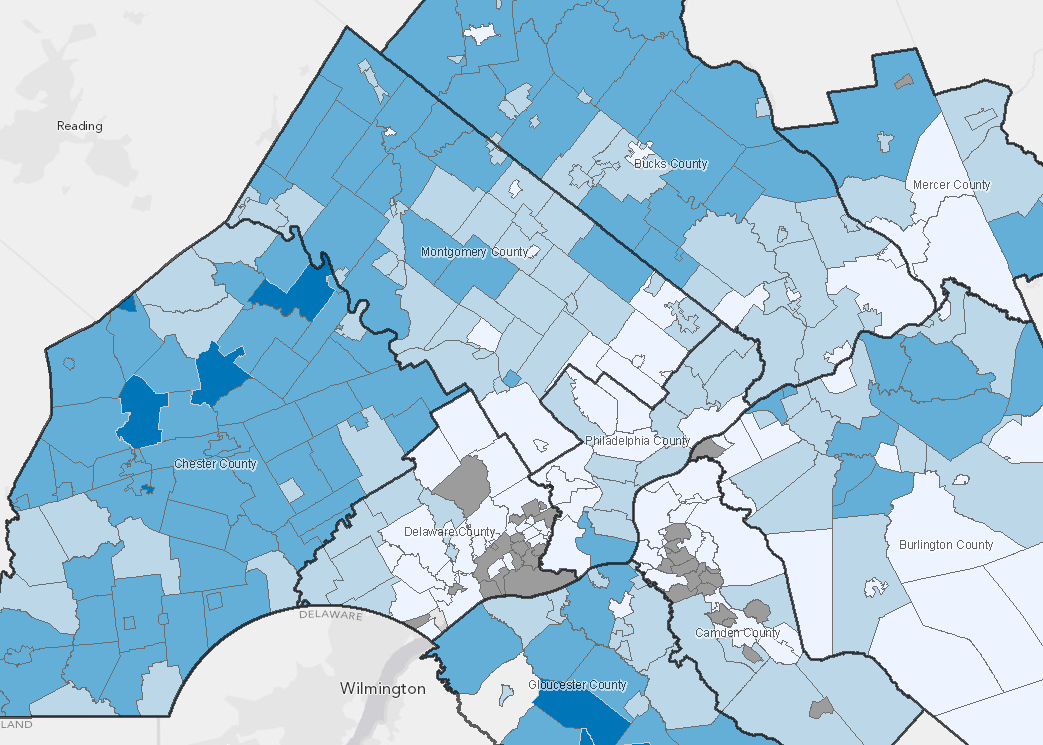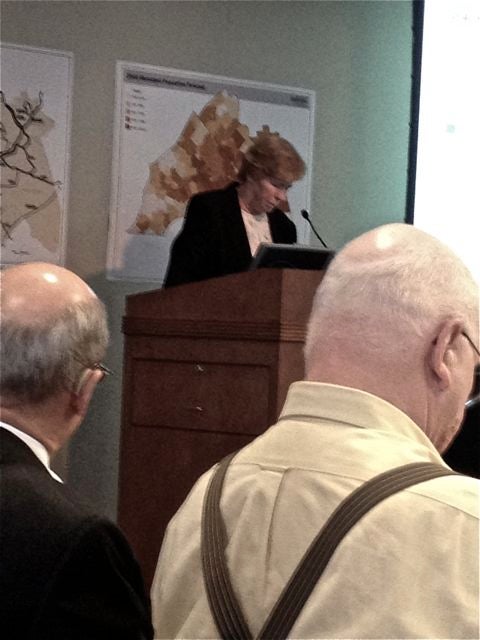DVRPC forecasts 11 percent population growth by 2040
The Delaware Valley Regional Planning Commission is forecasting the region’s population will grow more than 11 percent by 2040 ― with the greatest percentage growth coming from Gloucester County, which is predicted to see an increase of 30.5 percent.
That would bring the county’s population up to about 380,000.
The figures were released by the DVRPC at its Thursday board meeting.
In Southeastern Pennsylvania, Chester County is projected to see the greatest growth, percentage-wise, with an increase of 39.8 percent, bringing its population to about 647,000.
Growth in Philadelphia is forecast at 6.9 percent, with a population of more than 1.6 million.
Other population growth estimates for Southeastern Pennsylvania are: 16.3 percent in Bucks County, 2 percent in Delaware County and 11.8 in Montgomery County.
For the South Jersey portion of the region, growth is predicted to be: 10.3 percent in Burlington County, 2.9 percent in Camden County and 6.6 percent in Mercer County.
Total regional population is forecast at about 6.3 million in 2040.
Responding to these numbers, Ronald Bailey, executive director of the Chester County Planning Commission, told the board that “we’ve got to change the level of investment” in regional infrastructure to adequately handle this population growth.
In other news, the board approved a $1.8 million SEPTA project to capture and store energy from train car braking along the Market-Frankford El. The new technology is anticipated to reduce energy consumption on the line by 16 percent and is part of an ambitious plan by the authority to capture energy for storage and possible sale to the electric grid.
A federal grant is covering $1.4 million of the project’s cost.
The board also gave the go-ahead to a $144,000 study that will look at the vulnerability of SEPTA’s regional rail system to climate change and extreme weather events associated with it.
Track areas around Jenkintown and along the Manayunk/Norristown Line have been identified as being particularly vulnerable to flooding.
Six other pilot programs across the country are being partially funded by the Federal Transit Administration.
And in an unusual turn of events, David Reiner, New Jersey Gov. Chris Christie’s appointee to the DVRPC Board, voted against two staff proposals to award consultant contracts. Both were adopted.
“I’m not looking to stop this project,” he said of one of the contracts, which was awarded to Portfolio Associates to run surveys and focus groups to improve the TransitChek commuter program.
Instead, Reiner said he wanted DVRPC staff to better control costs by changing the way it negotiates contracts.
He also voted against the awarding of a consultant award to Johnson, Mirmiran and Thompston to help manage a $10 million William Penn Foundation grant to build a regional trail network, citing the same reason.
Additionally, Bucks County Commissioner Diane Ellis-Marseglia, who represents her county on the board, abstained from that vote, saying she wanted to know more details about the bids.
And former members of the Regional Citizens Committee, a citizen-advisory group that has been disbanded by the DVRPC Board, decried plans to replace the body with a Public Participation Task Force.
The board voted to amend the text of several memoranda of understanding with partner agencies to reflect that change.
It also opened up a public comment period ― from Jan. 30 to March 14 ― on a new public participation plan that outlines DVRPC’s steps to reach out to the public.
A vote will be taken on the plan in April.
This DVRPC interactive map may also be useful. You can zoom and click on a municipality to get the census data and forecasts: http://www.dvrpc.org/webmaps/Popforecast/index.htm
Contact the reporter at acampisi@planphilly.com
WHYY is your source for fact-based, in-depth journalism and information. As a nonprofit organization, we rely on financial support from readers like you. Please give today.








